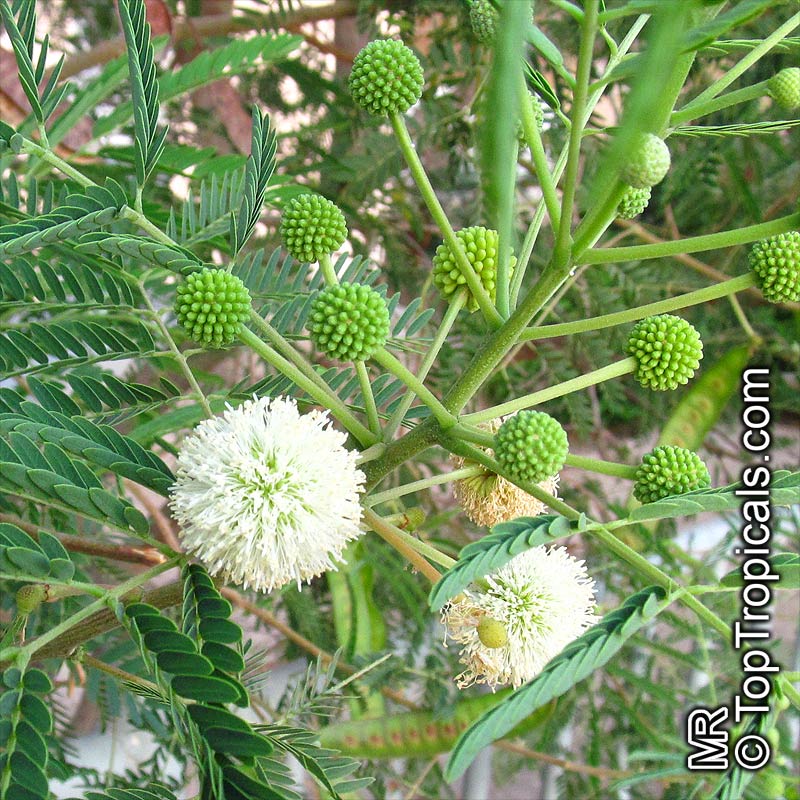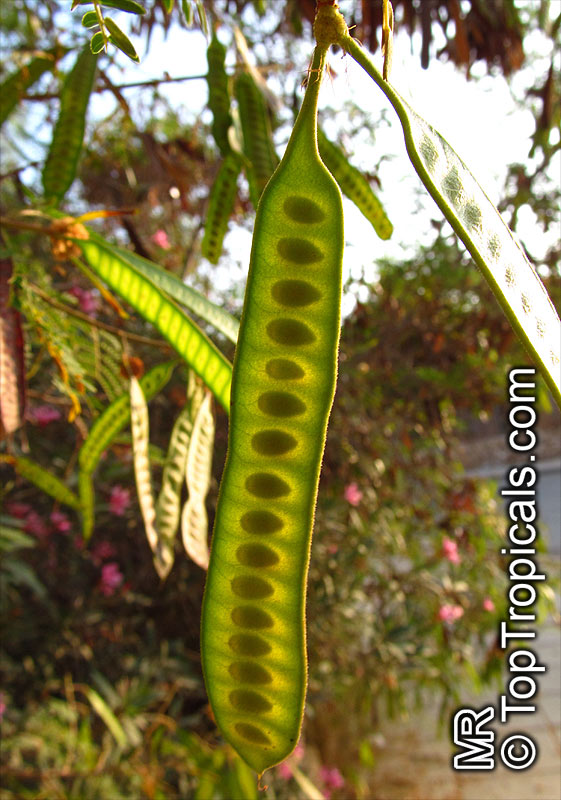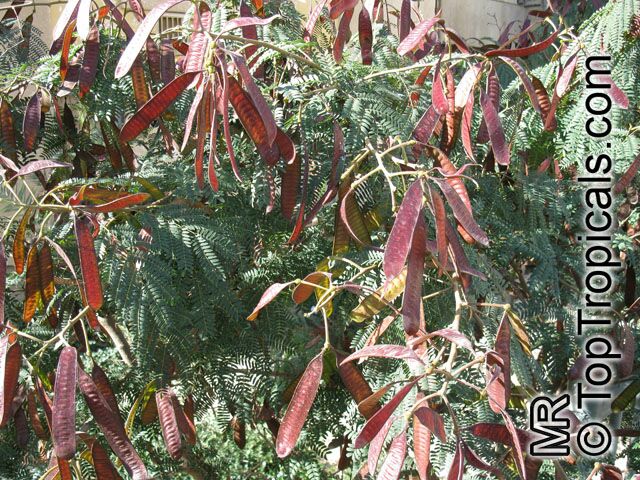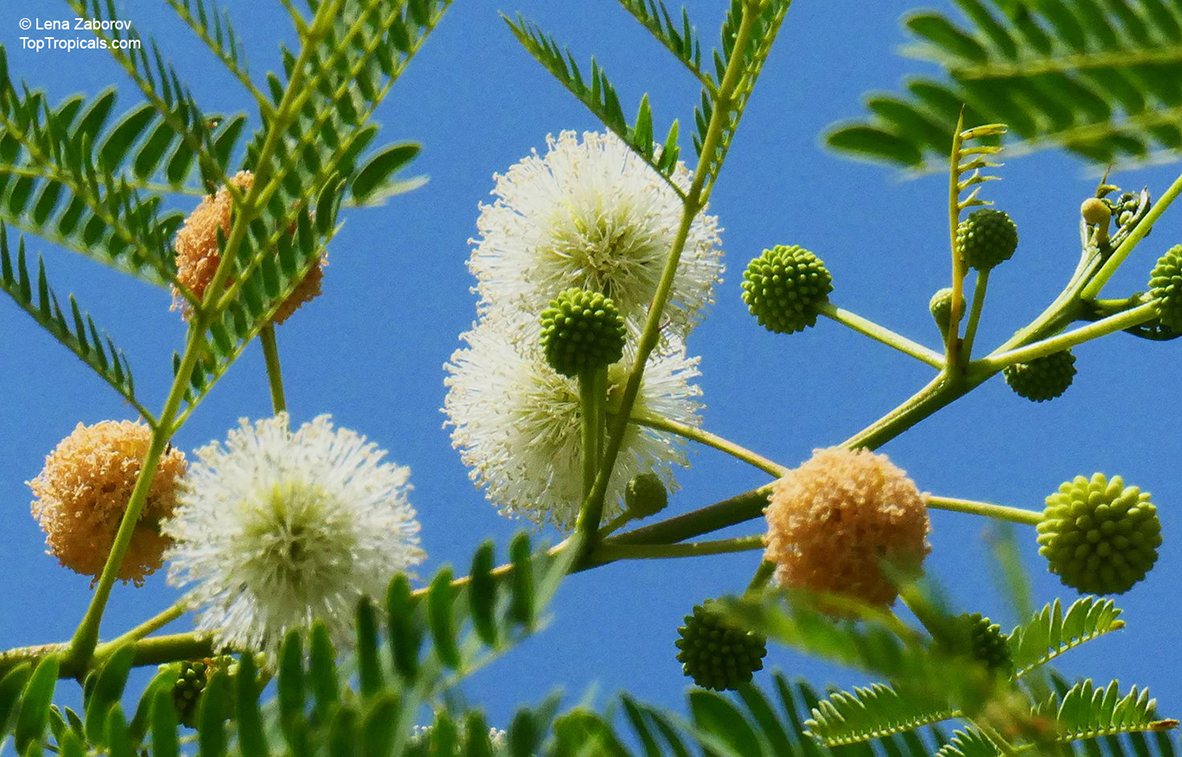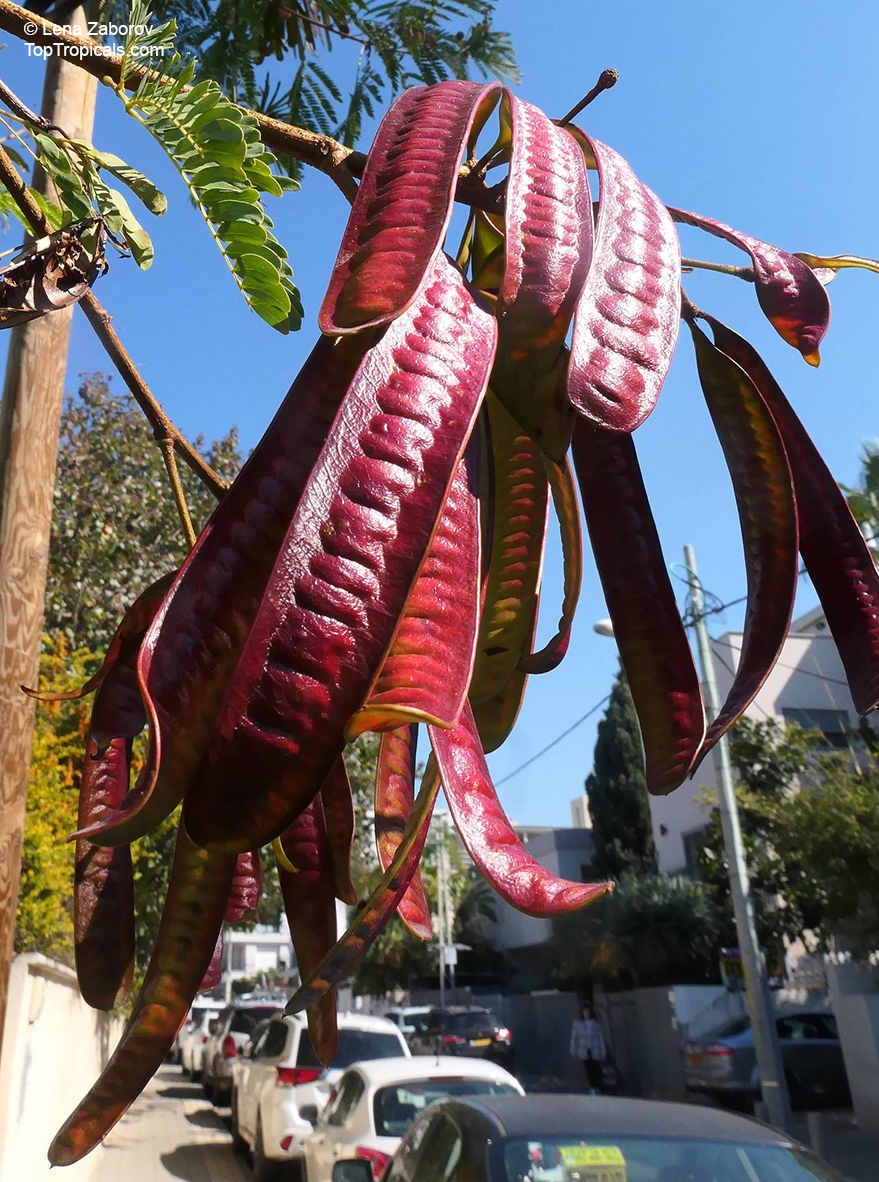Leucaena leucocephala, Leucaena glauca, Mimosa leucocephala, Acacia leucocephala
Wild Tamarind, Lead TreeFamily: Fabaceae
Subfamily: Mimosoideae
Origin: West Indies, Bahamas and Cuba, Trinidad and Tobago, from Southern Mexico to Northern South America









Naturalized northward to southern Texas, California and southern Florida, and southward to Brazil and Chile: also naturalized in Hawaii and the Old World tropics. Leucaena leucocephala is spreading naturally and has been reported as a weed in more then 20 countries across all continents except Europe and Antarctica. It is a weed of open, often coastal or riverine habitats, semi-natural, and other disturbed or ruderal sites and occasionally in agricultural land. Arborescent deciduous small tree or shrub, to 67Ft tall, fast-growing; trunk 4" to 5" in diam. Forming dense stands; where crowded, slender trunks are formed with short bushy tuft at crown, spreading if singly grown; leaves evergreen, alternate, bipinnate with 3-10 pairs of pinnae; flowers numerous, axillary on long stalks, white, in dense global heads 1" across. Fruit pod with raised border, flat, thin, becoming dark brown and hard. It is used as a shade plant in coffee, rubber, cacao and cinchona plantations, for reforestation, windbreaks and firebreaks. Necklaces are made with the seeds. Leadtree is valued as an excellent protein source for cattle fodder, consumed browsed or harvested, mature or immature, green or dry. The nutritive value is equal to or superior to alfalfa. Leadtree has gained a favorable reputation in land reclamation, erosion control, water conservation, reforestation and soil improvement programs, and is a good cover and green manure crop. The leaves, used as a mulch around other crops, are said to significantly increase their yields. Indigenous people in Mexico and Central America, use it as a vegetable. Unripe seeds are consumed with gusto and added to salsa. Green seeds are also consumed raw in Thailand and Indonesia. It tolerates a wide range of rainfall from 500 - 3500 mm and withstands strongly seasonal (6-8 month dry season) climates. However, it is not frost hardy and grows poorly, setting less seed in cooler tropical highland sites. The species also grows poorly on the acid soils with high Aluminium saturation that prevail in many humid tropical areas. In broad terms, it thus adapts well to a wide range of tropical and subtropical environments, especially seasonally dry tropical areas. Trees, propagated by seed or cuttings coppice well. Some seedlings less than one-year old will produce viable seed. Seeds remain viable from several months to several years. The hard waxy seedcoat makes scarification necessary before planting.The easiest and most common method is to scald seed in boiling or near boiling water. Boiling water is poured directly over the seed and allowed to cool to room temperature (preferably overnight), followed by sowing. Alternatively, small numbers of seed may be scarified by nicking which involves the use of a knife or secateur to clip off a small portion of the seed coat at the end opposite the pod attachment scar (hilum). The resultant minor damage to the underlying cotyledons is inconsequential to the germinating seedlings. For forage, seed should be sown 2" to 5" deep, planting at onset of wet season. Leadtree responds favorably to fertilizer and lime. Irrigation and cultivation may be necessary. The crop soon produces a dense stand.
Similar plants:
- Lysiloma latisiliquum, Acacia bahamensis, Acacia formosa, Acacia latisiliqua, Leucaena latisiliqua, Lysiloma bahamensis, Lysiloma latisiliqua, Mimosa latisiliqua (Bahamas Lysiloma, Candelon, False Tamarind, Wild Tamarind)
- Acacia cavenia, Mimosa caven (Espino Cavan, Roman Cassie)
- Vachellia farnesiana, Acacia farnesiana, Mimosa farnesiana (Yellow Mimosa, Sweet Wattle)
- Vachellia tortuosa, Acacia tortuosa, Mimosa tortuosa (Twisted Acacia, Huisachillo)
- Albizia lebbeck, Mimosa lebbeck (Womans tongue, Siris-tree, Rain tree, East Indian walnut, Kokko, Soros-tree, Raom tree)
- Dichrostachys cinerea, Cailliea glomerata, Dichrostachys glomerata, Dichrostachys nutans, Mimosa cinerea (West African Sickle Bush, Marabou Thorn, Aroma, Kalahari Christmas tree, Chinese lantern tree, Marabou-thorn, Princess Earrings)
- Enterolobium contortisiliquum, Mimosa contortisiliqua (Earpod Tree, Orelha-de-macaco)
- Mimosa albida (Mimosa)
- Mimosa borealis (Fragrant Mimosa, Pink Mimosa)
- Mimosa dysocarpa (Velvet Pod Mimosa, Gatuno, Velvetpod Catclaw)
